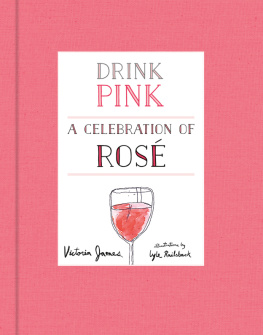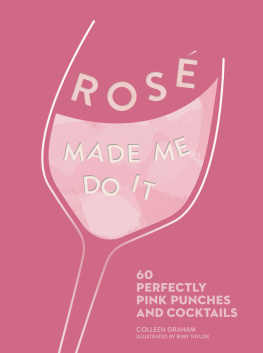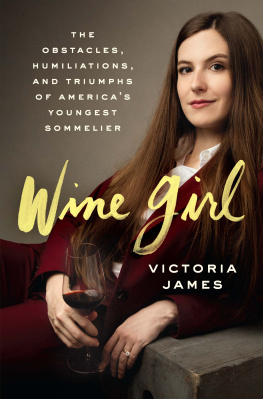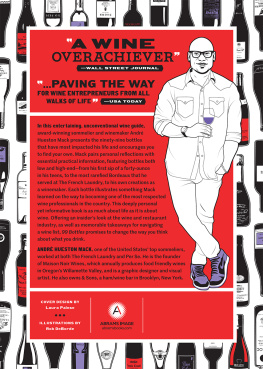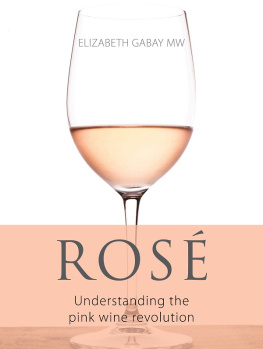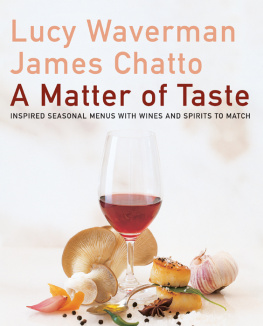CONTENTS
Guide
Australia
HarperCollins Publishers Australia Pty. Ltd.
Level 13, 201 Elizabeth Street
Sydney, NSW 2000, Australia
www.harpercollins.com.au
Canada
HarperCollins Canada
2 Bloor Street East - 20th Floor
Toronto, ON M4W 1A8, Canada
www.harpercollins.ca
New Zealand
HarperCollins Publishers New Zealand
Unit D1, 63 Apollo Drive
Rosedale 0632
Auckland, New Zealand
www.harpercollins.co.nz
United Kingdom
HarperCollins Publishers Ltd.
1 London Bridge Street
London SE1 9GF, UK
www.harpercollins.co.uk
United States
HarperCollins Publishers Inc.
195 Broadway
New York, NY 10007
www.harpercollins.com
DEDICATED TO
LAURA JAMES
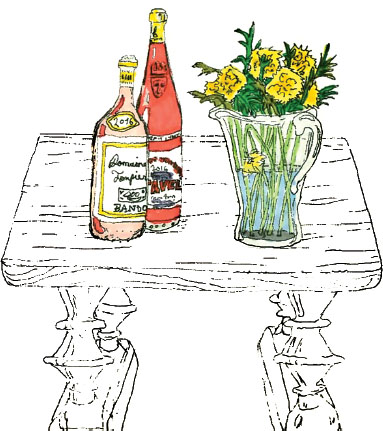
Ros is probably the most unpretentious and democratic of all wines. Something you drink while playing boules or when going mushroominga true vin de copain.
JACQUES PPIN
RENOWNED FRENCH CHEF
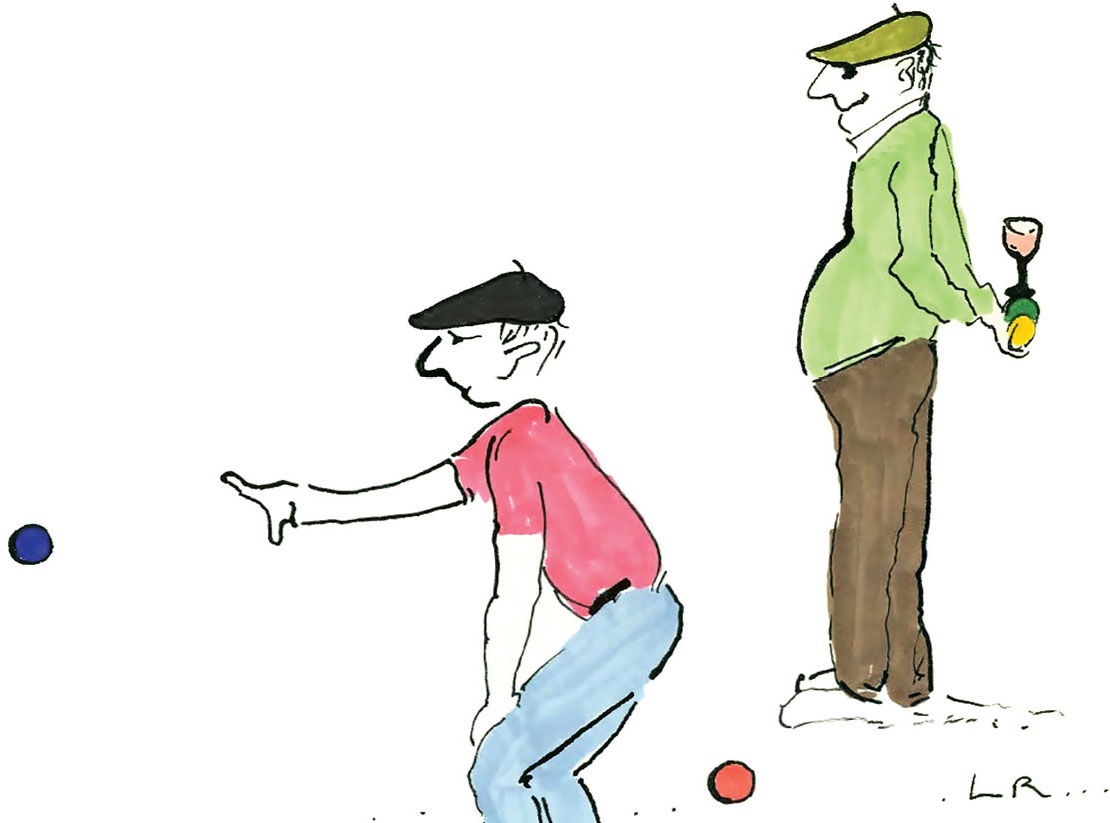

I HAD MY FIRST TASTE OF WINE WHEN I WAS NINE YEARS OLD. WHEN MY Grandma Willie wasnt looking, I snuck a swig from her glass. She was a big fan of sitting on the porch at night, reading romance novels, and sipping White Zinfandel. Cooled down with a cup full of ice, the pink drink seemed like such a pleasant escape.
Years later at twenty-one, I would take my first legal sip of ros. I was feverishly studying for my sommelier exam and tasting up to one hundred wines a day. Taste. Swoosh. Think. Spit. Every day I would go through the painstaking process of trying wines from around the world to register their characteristics. Although barely legal, I passed my exam and became the youngest sommelier in the country.
A few years passed. My obsession with exams dwindled as I traveled to some of the most beautiful places in the world, like France, Portugal, Chile, Italy, California, and Switzerland. I worked in vineyards alongside winemakers learning about the heart and soul of wine. Long lunches flowed into dinners filled with laughter and stories. I fell in love with centuries of tradition and the humble farmers who dedicated themselves to their land, and still do.
Wine is one of the most competitive industries in the world. It is a constant battle to stay relevant. Every day I tackle a bit more of the never-ending world of wine, making sure my knowledge is always up to date. I think these pressures eventually wear down a lot of sommeliers.
However, I have a trick: Drink more ros. For me, no other wine embodies the joie de vivre like ros. There is nothing daunting about pink wine. It does not force you to recall complicated French classifications put in place during the 1800s or rules governing vineyard management.
After a few sips of ros, I am reminded that this is what wine is all about, pleasure and simplicity. Although my palate has evolved past White Zinfandel, I still hold onto my childhood delight in pink wine.
The history of the pink drink goes back a lot further than you might think. From Ancient Greece to California, it has always been a part of wine culture.

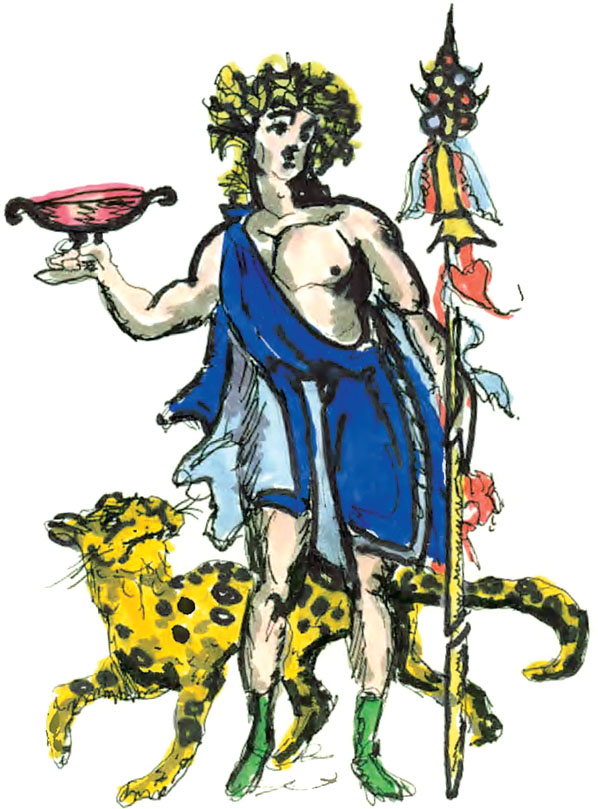
THE GREEKS AND THE ROMANSTHE BIRTH OF ROS
(EIGHTH CENTURY BCEMID 100s BCE)
Amphictyon, a Greek God that some traditions note as having been born from the earth, created pale wines of ros color by simply mixing red wine with water. This less potent beverage helped minimize quarreling during meetings of his councilors who often leaned too heavily on wine for confidence.
In ancient Greece, white and red grapes were harvested together and pressed quickly to allow fermentation to begin. The impatience for drinkable wine usually outweighed the desire to explore higher quality winemaking. As a result, almost all wine was a natural light pink color.
Eventually, the Greeks and Romans explored separating grapes by color. They also allowed the skins to macerate with the juice for pigment, eventually creating red wines. However, these early examples were often tannic and hard to drink. For quite some time, the general preference leaned toward the less harsh, lighter-colored wines. Ros remained the beverage of choice for centuries.
THE FIRST WINES IN FRANCE WERE ROS.
(SIXTH CENTURY BCEEARLY NINETEENTH CENTURY)
In the sixth century BCE, people known as the Phocaeans, from an ancient Ionian Greek city, set sail. From Greece, they brought grape vines to Massalia (modern day Marseille) in southern France. The wines they made there were naturally light pink in color. Why? Well, pigment in wine comes from the grape skin. (Next time you are eating a grape, bite it in half and look at the inside. You will notice the pulp and juice are clear.) By not letting the skins of the grapes sit with the juice, the finished product only picks up a bit of color. These ross would forever have a home in the South of France.
In the second century BCE, the Romans landed in Provence. They had already heard all about the pink wines of Massalia. They took these coveted wines and used their super-connected trade networks to make them popular around the Mediterranean.
In the Middle Ages, it was rumored that Bordeaux created violet-colored ros. The wine picked up a nickname known as Clareit (in Latin, claritas means clarity). These gently colored wines soon became fashionable around France.
In the twelfth century, Bordeaux came under British rule. The English loved their newfound pink wine dearly. Writer Samuel Johnson famously stated, He who aspires to be a serious wine drinker must drink Claret. Until the late 1900s, the English and their precious Claret were inseparable.
In the nineteenth century, French tourists started to flock to places like the Cte dAzur in southern France. After a long day of playing ptanque and swimming in the sea, they would relax with a chilled glass of ros. All of a sudden, these local wines became a symbol of glamour, leisure, and summer.
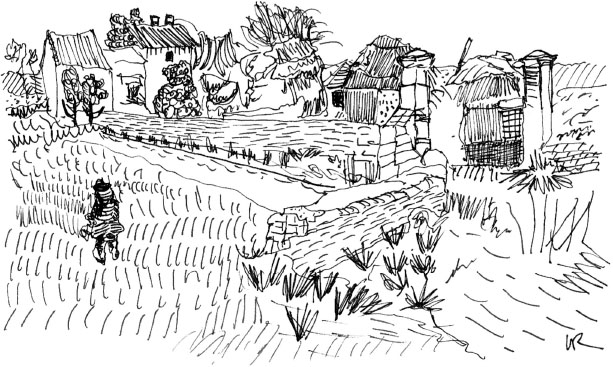
For many, ros also became a simple vin de soif (wine to quench thirst), something to drink while you were cooking or to serve as an aperitif before dinner. It was not a fussy wine. Many parents would even serve it to their children as a treat.
Jacques Ppin told me that he first drank ros when he was only six or seven years old. It was wonderful. My father would start putting a tablespoon of ros in a glass of water, just to change the color a little bit and get a taste of what it is. You have to understand, back then, there was no soda or anything. There was water and then there was wine, that was it.
PORTUGAL: MATEUS AND LANCERS
(1940s1970s)
If you have never heard of Mateus and Lancers, you might be surprised to know that these products are what many blame for ruining ross reputation. Lets take a look at both of them a bit more.
Fernando van Zeller Guedes said he created the infamous Mateus ros because of bed bugs. While traveling around the Douro in Portugal in the 1940s, Guedes rarely slept due to bed bug infestations at the local hotels. As a result, he would stay up at night, constantly thinking and reviewing his notes on wine. Apparently, on one of these sleepless nights, he came up with the idea of a wine that would appeal to both women and younger generations. He also decided to create a bottle shaped like a soldiers canteen. Some viewed this as fuel for the war on serious wine.

